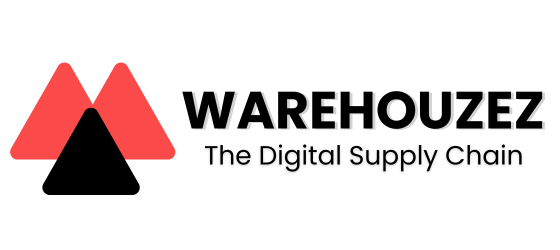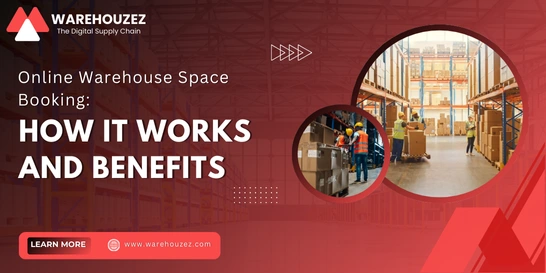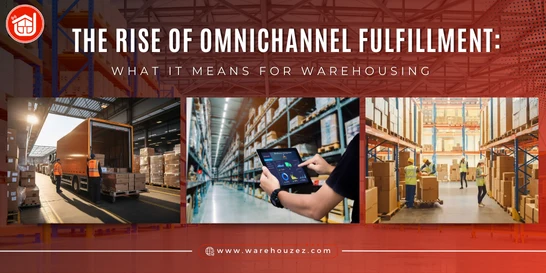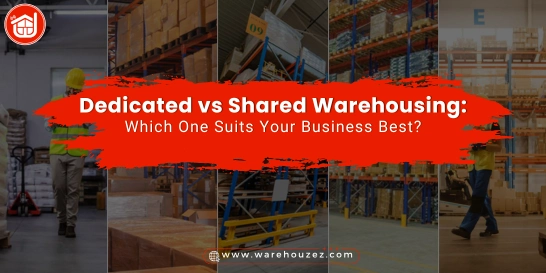What is Warehousing? Functions, Importance, and Benefits
What is Warehousing? Functions, Importance, and Benefits
Warehousing is an essential aspect of modern-day supply chains, yet so many people are still unfamiliar with its meaning, functions, and importance. In simple terms, 3PL warehousing involves the storage, organization, and distribution of goods. Warehouses serve as strategic storage facilities that keep inventory organized, secure, and readily available for timely delivery to customers. The functions of warehousing include receiving and inspecting goods, maintaining records, updating inventory levels, picking and packing orders, and streamlining the shipping process. From providing a secure storage environment to facilitating faster order fulfillment, 3PL warehousing services play a crucial role in the smooth supply chain management of businesses across various industries.
In this particular blog post, we will explore the functions, importance, and benefits of warehousing, shedding light on how it enables businesses to efficiently meet customer demands and streamline their overall operations.
Introduction to What is Warehousing and Its Importance
In the most inclusive sense, warehousing refers to the process of storing goods and products in a designated facility until they are needed or ready to be distributed to consumers. This facility, known as a 3PL warehousing facility, serves as a central hub for inventory management, storage, order fulfillment, and transportation purposes. The primary function of warehousing is to ensure the timely availability of goods, allowing businesses to meet customer demands efficiently. Warehouses not only provide storage for goods but also facilitate various other functions, such as receiving, packing, labeling, sorting, and shipping. Furthermore, they help in preventing stockouts and reducing supply chain disruptions. Businesses can benefit from 3PL warehousing services as they allow them to efficiently manage their inventory levels and reduce overall costs by taking advantage of economies of scale. Outsourcing warehouse-related operations to specialized third-party logistics or 3PL service providers can further help businesses optimize their supply chain operations and focus on their core competencies. Additionally, 3PL warehousing providers provide a safe and secure environment for storing goods, protecting them from damage and theft.
Key Functions of Warehousing
Undoubtedly, warehousing plays a significant role in the supply chain management process by providing key functions that ensure the efficient storage, handling, and distribution of goods.
Let's take a close look at the main functions of warehousing:
1. Inventory Management
Inventory management is integral to warehouse operations, helping businesses maintain accurate stock levels. This involves keeping track of stock levels, monitoring the movement of goods, and ensuring accuracy in stock records. Effective inventory management helps in timely ordering, minimizing stockouts, and preventing overstocking, which ultimately leads to improved operational efficiency and customer satisfaction.
2. Storage of Goods
3PL warehouses provide storage facilities for a wide range of goods. They offer a safe and secure environment for goods to be stored before they are distributed to customers. Proper storage includes maintaining appropriate conditions such as temperature control, humidity, and protection against theft, fire, or damage. Warehouses often use specialized equipment and infrastructure to optimize storage space and ensure the preservation of goods.
3. Sorting, Organizing, and Consolidating
Another key function of warehousing is to sort, organize, and consolidate different products or shipments. This involves systematically arranging goods based on their characteristics, size, or destination. By doing so, warehouses can properly allocate resources and manage space, making it easier to locate and retrieve items when needed. This function also helps in streamlining the transportation process and reducing handling costs.
4. Picking, Packing, and Labelling
Picking, packing, and labelling are the primary warehousing functions. These processes include carefully selecting the products from their respective storage locations, packing them securely to ensure safe transport, and labelling them accurately to avoid any confusion or errors during shipment.
5. Streamlining the Shipping Process
There's no denying the fact that warehousing plays a crucial role in streamlining the shipping process. 3PL warehouse companies are experts in organizing and consolidating products from various suppliers to optimize shipping costs, coordinating with transportation companies to ensure timely delivery, and maintaining detailed records of all shipments to track their progress and resolve any issues that may arise.
6. Timely Order Fulfillment
Efficient warehouse operations ensure timely order fulfillment by properly managing the inventory and stock levels. This involves maintaining appropriate stock levels to meet customer demand, regularly monitoring and reordering inventory to prevent stockouts, and implementing technology solutions to accurately track and fulfill customer orders.
7. Reverse Logistics and Returns Management
Another important function is managing reverse logistics and returns. Warehouse partners are experts in handling customer returns, processing refunds or exchanges, and managing the flow of returned products back into inventory or properly disposing of them. Effective return management or reverse logistics helps enhance customer satisfaction and reduces the financial impact of returns on the business.
Benefits of Warehousing for Businesses
There are abundant benefits to efficient warehousing operations, ranging from increased cost savings and customer satisfaction to improved inventory management and quality control.
1. Cost Savings
3PL warehousing solutions offer several cost-saving benefits for businesses. By storing products in a warehouse, companies can take advantage of economies of scale and bulk buying, which result in lower procurement costs. Additionally, this allows businesses to avoid the expenses associated with maintaining large inventories at their own facilities, such as rent, utilities, and security. Instead, they can store products in the warehouse on a need basis, reducing costs and improving cash flow.
2. Increased Customer Satisfaction
Warehouse-related operations ensure timely and reliable product availability for customers. By having inventory stored in a 3PL warehouse, businesses can quickly fulfill customer orders, providing shorter lead times and faster delivery. This leads to increased customer satisfaction, as customers receive their products promptly and are more likely to become repeat buyers. This also allows businesses to offer a wider range of products and variations, meeting the diverse needs and preferences of customers.
3. Improved Quality Control
Businesses can improve their quality control processes with reliable warehouse services. With a dedicated space to inspect and manage inventory, businesses can consistently monitor the condition and quality of their products. This helps identify any defects, damages, or expiration issues before the products are shipped to customers.
4. Smooth Supply Chain Management
Warehousing plays a crucial role in the smooth functioning of a business's supply chain. It provides a centralized location where goods can be received, stored, sorted, and distributed as needed. This ensures that supply chain operations are streamlined, minimizing delays, and enhancing overall efficiency in the movement of goods from suppliers to customers.
5. Risk Minimization
With a reliable warehouse partner, businesses can reduce the risk associated with unexpected disruptions in the supply chain. By storing inventory in a warehouse, businesses create buffer stock that can be used to mitigate the impact of unforeseen events.
Choosing the Right 3PL Warehousing Service Provider
Here's how businesses can choose the right 3PL warehousing service provider to unlock maximum benefits.
Determine your specific storage needs and requirements.
Research and evaluate potential 3PL warehousing service providers.
Closely evaluate their experience and expertise in your industry.
Assess their capabilities and capacity to handle your inventory and storage needs.
Look for a 3PL service provider with a track record of reliable and timely deliveries.
Consider the location of the warehouse and its proximity to your suppliers and customers.
Evaluate the technology and warehouse management systems used by the provider for inventory management and tracking.
Assess their flexibility and adaptability to changing business needs.
Consider their pricing structure and contract terms.
Seek recommendations and feedback from other businesses that have used their services.
Wrapping Up
To wrap things up, warehousing is a pivotal component of the supply chain management process. It serves multiple functions, such as receiving, storing, and distributing goods efficiently. The importance of warehouse operations cannot be overstated, as they enable businesses to optimize their inventory management, minimize costs, and improve customer service. Additionally, it offers various benefits such as risk mitigation, consolidation of goods, and value-added services. With the rapid growth of e-commerce and global trade, the need for effective warehousing solutions is only going to increase. Therefore, it is crucial for businesses to understand the functions, importance, and benefits of warehousing in order to stay competitive and meet the demands of today’s market.



